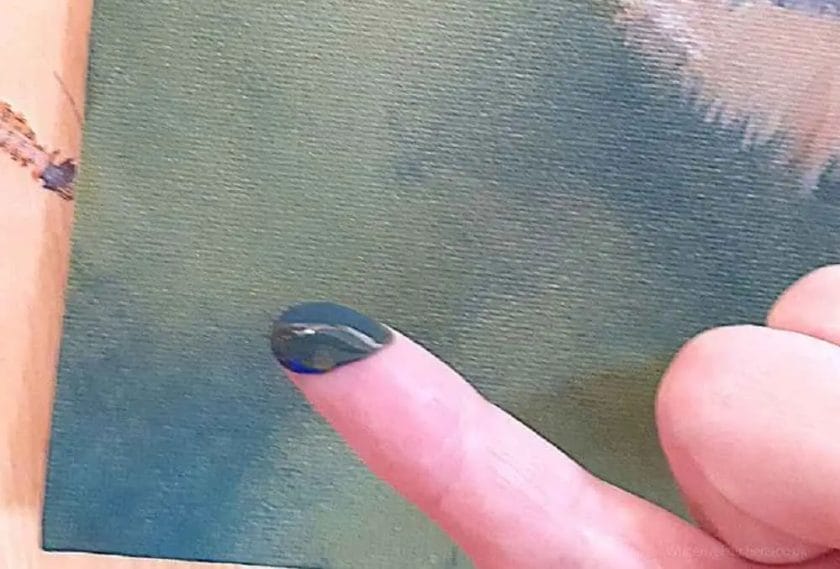Acrylic paint is a popular choice for artists and painters due to its versatility and fast-drying properties. While this is a convenient feature for many, it can also be a challenge for those who need more time to work with their paint.
In this article, we aim to provide a comprehensive understanding of why acrylic paint dries so fast and how to work with it effectively.
Understanding Acrylic Paint
Acrylic paint is a type of fast-drying, water-based paint that is made from a synthetic polymer known as polymethyl methacrylate (PMMA).
It is a versatile medium that can be used for a variety of purposes, including painting, printmaking, and mixed media.
Acrylic paint dries through a process known as evaporation, where the water in the paint evaporates into the air, leaving the pigment and binder behind.
Why Does My Acrylic Dry So Fast?
There are several factors that can cause your acrylic to dry so fast, here are come of them:
Room Temperature and Humidity:
The temperature and humidity of the room can greatly affect the drying time of acrylic paint. Higher temperatures and lower humidity levels will cause the paint to dry faster, while lower temperatures and higher humidity levels will slow down the drying time.
Airflow:
Airflow can also have a significant impact on the drying time of acrylic paint. For example, a fan or open window can cause the paint to dry faster due to the increased movement of air.
Paint Consistency and Thickness:
The consistency and thickness of the paint can also affect its drying time. Thicker layers of acrylic paint will take longer to dry while thinner acrylic paint will dry faster.
Use of Additives and Mediums:
Certain additives and mediums can affect the drying time of acrylic paint. For example, the use of a slow-drying medium can slow down the drying time, while the use of a fast-drying medium can speed it up.
Quality of the Paint Brand:
The quality of the paint brand can also play a role in its drying time. High-quality acrylic paints are typically formulated to dry more slowly, while lower quality paints may dry faster.

Tips to Prevent your Acrylic from Drying So Fast
In order to prevent your acrylic from drying so fast, here are some tips to follow:
Work in Thin Layers:
Working in thin layers can help to slow down the drying time of acrylic paint. By using thin layers, you can give yourself more time to work with the paint before it dries.
Blend Colors Before They Dry:
Blending colors before they dry is another way to slow down the drying time of acrylic paint. By doing this, you can create a more fluid and seamless look in your painting.
Use a Palette that Retains Moisture:
Using a palette that retains moisture, such as a ceramic palette or a silicone palette, can help to keep the paint wet for longer, giving you more time to work with it.
Keep a Spray Bottle of Water Nearby:
Keeping a spray bottle of water nearby can help to rehydrate the paint and slow down its drying time.
Use a Slower-Drying Acrylic Brand:
Finally, using a slower-drying acrylic brand can also be helpful in slowing down the drying time of acrylic paint.
Avoid Over-thining your acrylic:
As stated above, thinner acrylic dries faster than thicker acrylic. Over-thining your acrylic will cause your paint to dry faster. Hence, don’t over-thin your acrylic to prevent it from drying so fast.

Conclusion
In conclusion, understanding why acrylic paint dries so fast and how to work with it effectively can greatly enhance the painting experience for artists and painters.
By using the tips above, you can have more control over the paint and create your desired artwork more effectively.
Can you slow down the drying time of acrylic paint once it is on the canvas?
Yes, you can slow down the drying time of acrylic paint once it is on the canvas. There are several ways to slow down the drying time of acrylic paint once it is on the canvas.
One way is to use a retarding medium, which is a special additive that slows down the drying time. Another way is to mist the paint with water from a spray bottle.
This will slow down the drying time and make it easier to blend colors and create smoother transitions.
Can you re-wet acrylic paint after it has dried?
Yes, you can re-wet acrylic paint after it has dried, this is called reactivation. However, note that there is a minimal level of water-resistance when the acrylic paint is dry.
Also, reactivated acrylic paint will not behave the same as wet paint. The reactivated paint will become sticky and may not blend as easily as it did when it was wet.
To avoid this, it is best to work in thin layers and blend colors before the paint has completely dried.
How can you prevent acrylic paint from drying too fast?
There are several ways to prevent acrylic paint from drying too fast, including working in a humid environment, using a slow-drying acrylic brand, keeping a spray bottle of water nearby to mist the paint, and using a palette that retains moisture.
Can you use acrylic paint on fabric?
Yes, acrylic paint can be used on fabric. It is a versatile medium that can be used on a variety of surfaces, including canvas, paper, and fabric. To make the paint permanent on fabric, it is recommended to heat set it with an iron or heat press it after it has dried.
Can you mix acrylic paint with other mediums or materials?
Yes, acrylic paint can be mixed with other mediums or materials, such as gesso, water, and other acrylic mediums. This can help to create different effects, textures, and finishes, and also slow down the drying time if necessary.
When mixing acrylic paint with other materials, it is important to experiment and test the results on a small area before using it on a larger scale.
